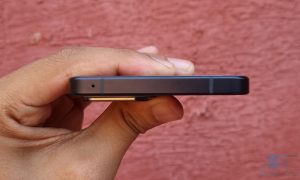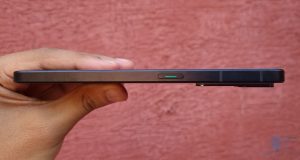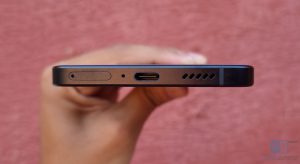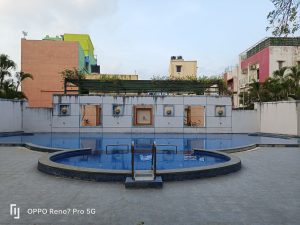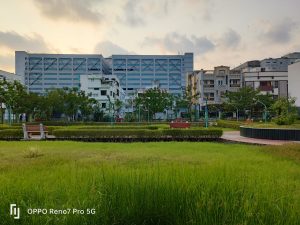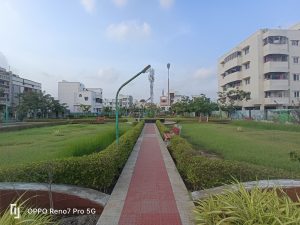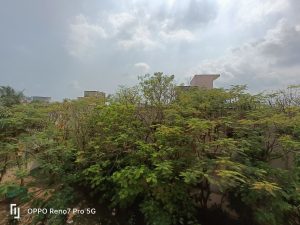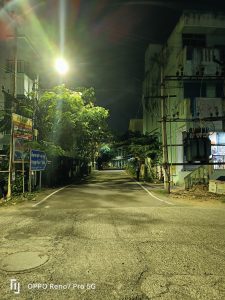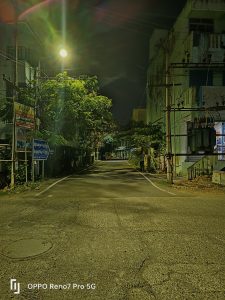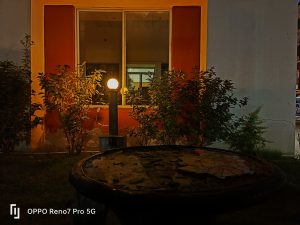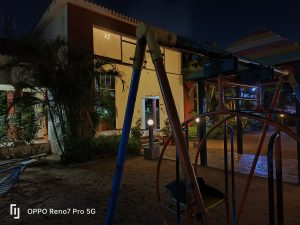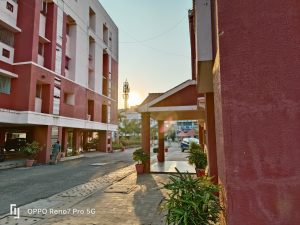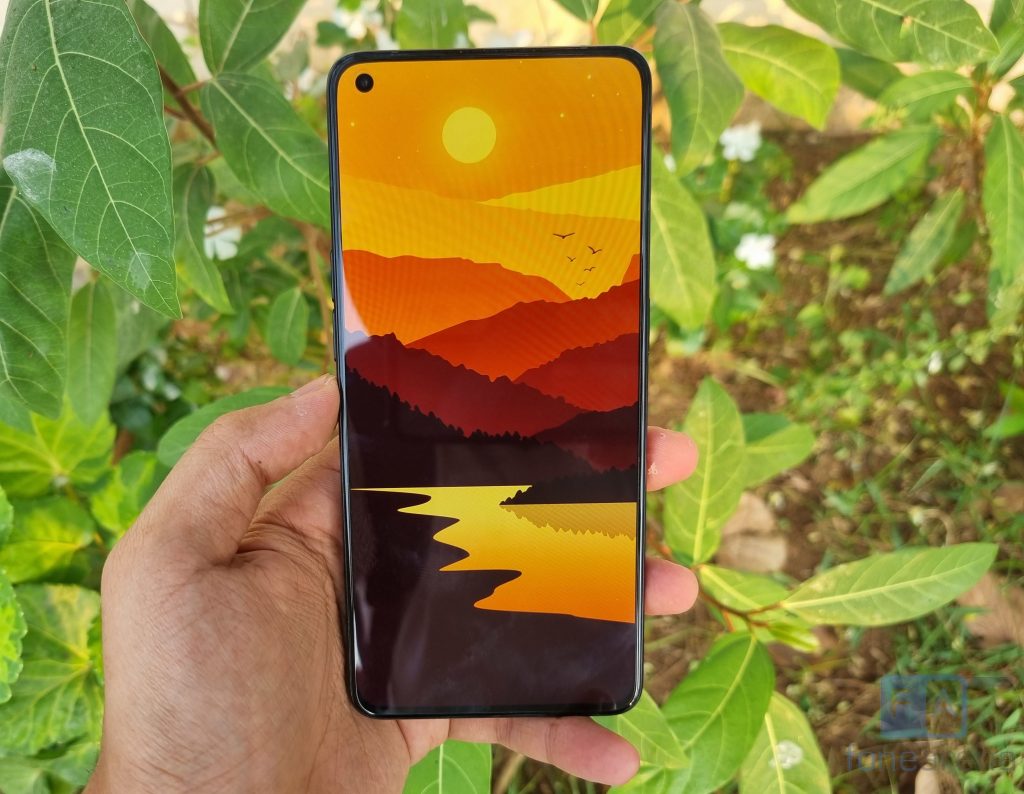
Earlier this month, OPPO launched new models in their mid-range Reno line-up of smartphones, namely the Reno7 and the Reno7 Pro. On paper, it appears that OPPO has made only minor tweaks to both devices, primarily in the design, and have continued to price them near other high-end smartphones from OnePlus and Xiaomi. Is the Reno7 Pro worth the price, considering that it is similar to last year’s model? Read on in my review.
OPPO Reno7 Pro Box contents:
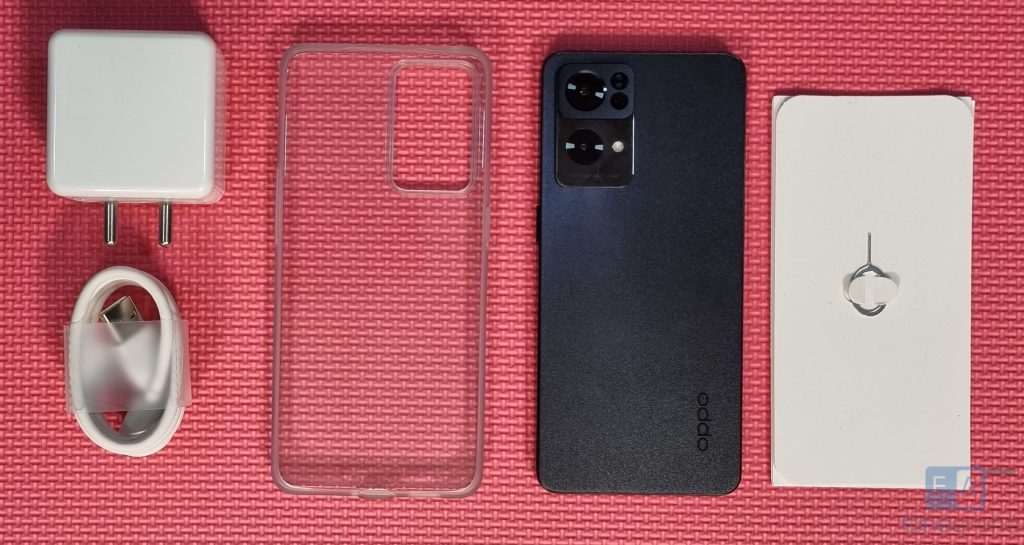
- OPPO Reno7 Pro 5G smartphone (12GB+ 256GB) in Starlight Black colour.
- 2-pin 65W charger (10v-6.5A)
- USB Type-A to USB Type-C cable
- SIM ejector tool
- Protective clear case
- Quick guide and Safety guide
Design, hardware and display
The design of the OPPO Reno7 Pro seems to have adopted the design of the Reno6 that was last year. Gone are the curved edges and display of the Reno6 Pro, and instead, the Reno7 Pro has adopted flat edges and a flat display. The phone feels sharper in the hand and I really like it. According to OPPO, the Reno7 Pro is the slimmest Reno smartphone ever too, measuring in at 7.45mm thick, which certainly adds to the premium look of the smartphone. In terms of weight, it measures 180 grams.
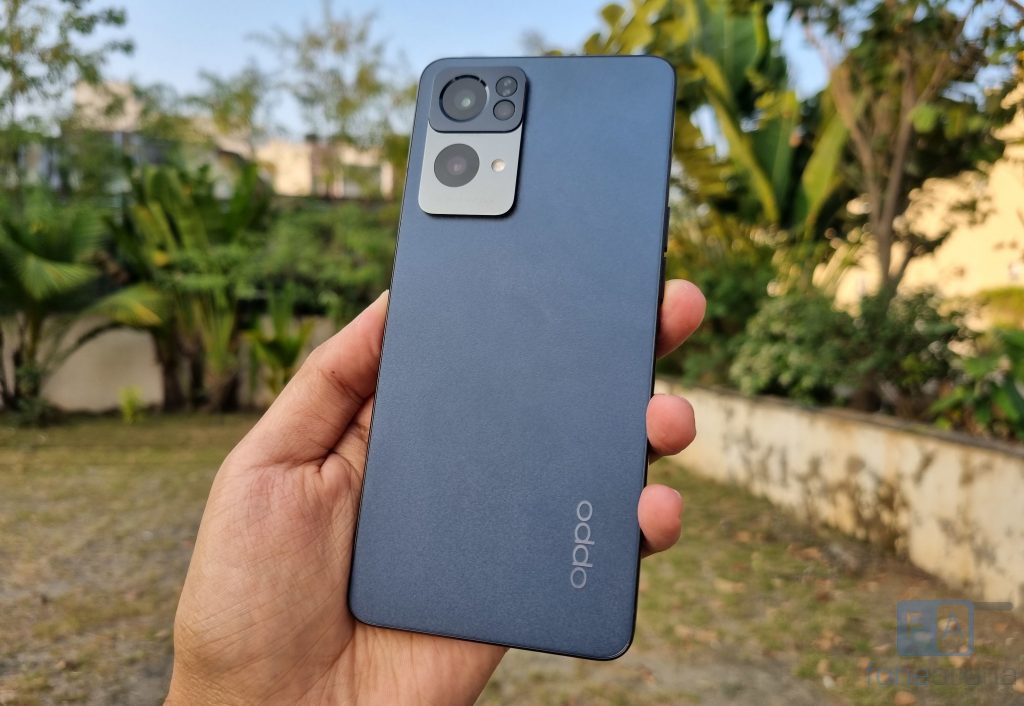
Though the design has changed, OPPO has continued to use high-quality premium materials for the Reno7 Pro, such as metal railings on the sides and glass on the back. The glass on the front is 2.5D curved, and it is protected using Corning Gorilla Glass 5 technology. The finish of the rear glass uses LDI technology to create something called OPPO Glow, which gives it a little over a million etchings to create a unique feel and look. It is wonderfully shimmery, and overall looks fantastic. The finish also does a very good job of not showing fingerprints and smudges.
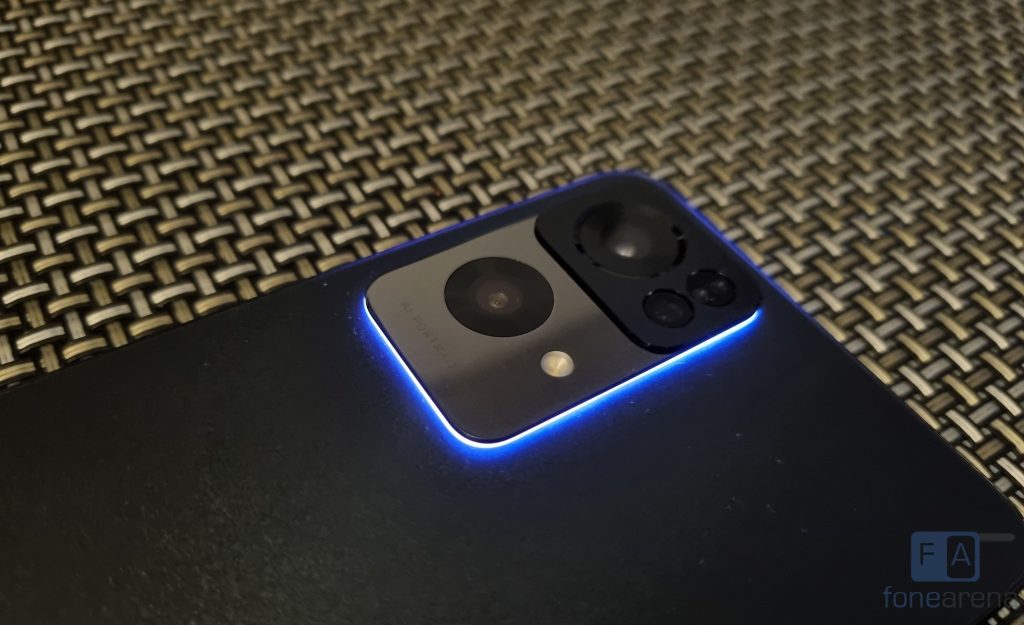
The rear camera housing not only holds the camera lenses but also integrates the Reno7 Pro’s most unique feature – the notification light. OPPO calls it ‘Orbit Breathing Light’ and the integration is super neat. Even when using the included case, the light defuses nicely, which makes it noticeable when the phone is placed facing up. My only issue with it is that it only glows in blue colour, and I wish it had more colour choices.
The front camera is housed within a punch-hole in the top-left corner of the display, and it is small and unobtrusive. The power button can be found on the right edge, the volume rocker on the left edge and on the bottom edge, there is a speaker grill, USB Type-C port and SIM card tray. The top edge has a single microphone hole, and the SIM card tray does not feature a dedicated MicroSD slot.
It has the typical set of sensors including a geomagnetic sensor, proximity sensor, optical sensor, accelerometer and a gyroscope. The haptic feedback also feels good, thanks to its X-axis linear motor.
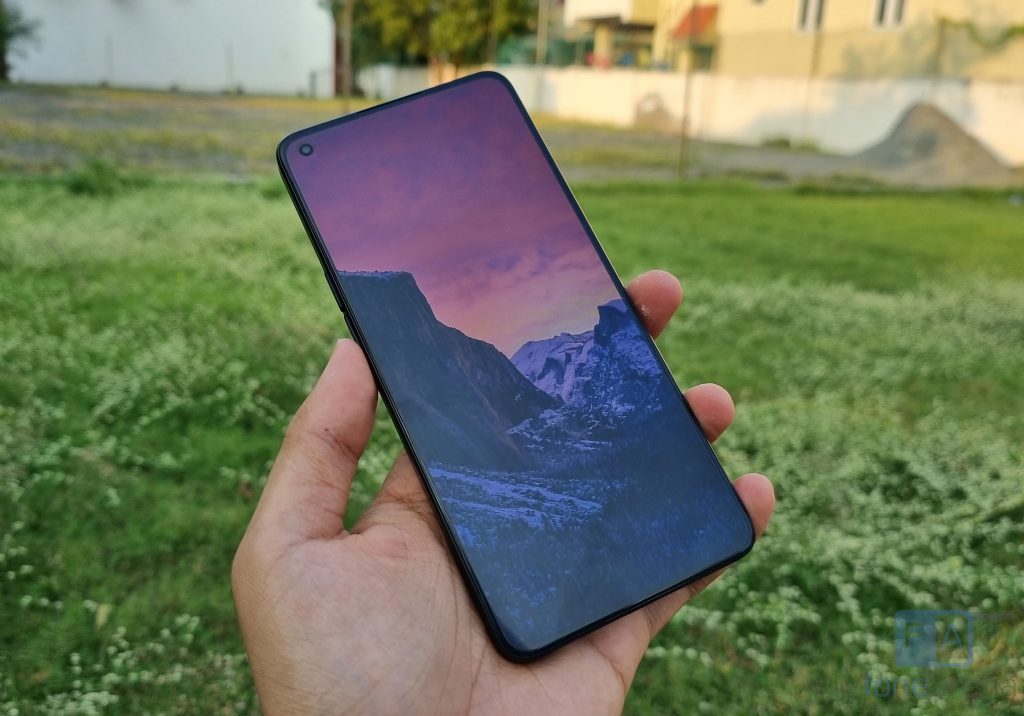
The display on the Reno6 Pro is a 6.5-inch AMOLED flat panel with a FHD+ resolution of 2400 × 1080 pixels, a maximum refresh rate of 90Hz and a maximum touch sampling rate of up to 1000Hz (during gaming mode). Bezels are thinner than the previous generation on all edges, giving the phone a screen-to-body ratio of 92.8% and the display also covers 99.94% of the DCI-P3 colour space.
Coming to the quality of the display, it is plenty sharp for its size and smooth, thanks to its 90Hz refresh rate, although I would have liked to see 120Hz support at this price segment. Colours look vibrant, and sunlight readability was not an issue either. In vivid mode, the contrast levels were high, and there is an option to set the colours to “Natural” if you like slightly muted colours.
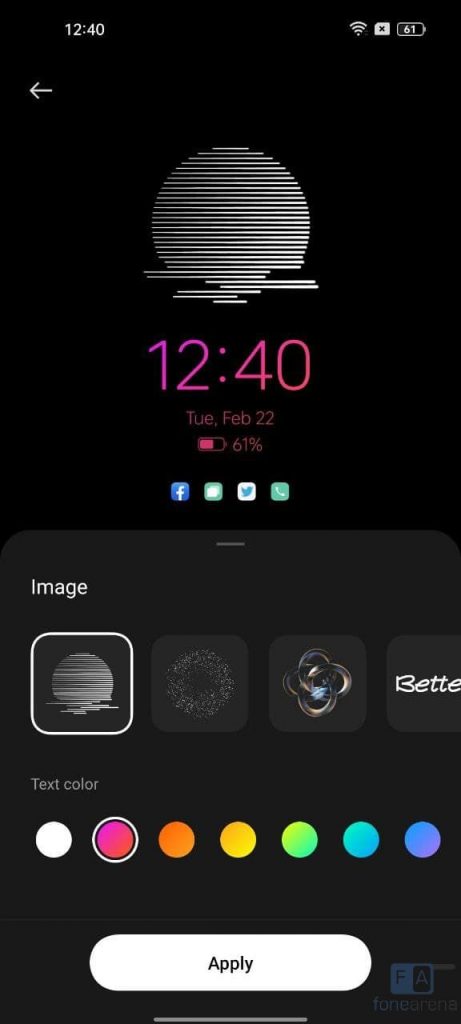
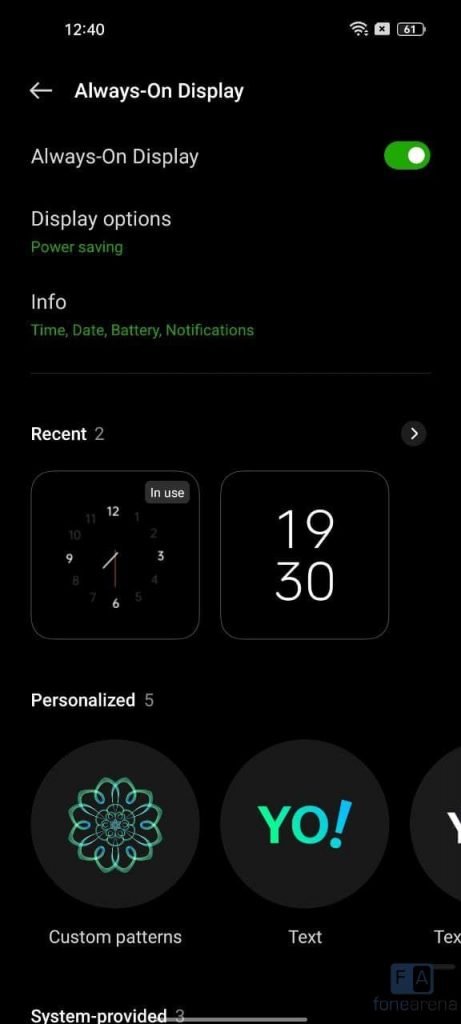
The phone does feature support for an Always-on-display, with tons of customizations offered. Users can choose between turning on the display all day, or during a scheduled time period, or in power saving mode which will turn off the display if the phone has been stationary for too long. Other customization options include the ability to set the type of clock, text, images and custom patterns.
Camera

The rear cameras on the Reno7 Pro are the major upgrade this time around, featuring a new 50MP Sony IMX 766 1/1.56″ sensor with f/1.8 aperture, an 8MP ultra wide-angle camera with f/2.2 aperture and a FOV of 118.9°, and a 2MP macro camera. The front camera is a 32MP Sony IMX709 1/2.74″ sensor with an f/2.4 aperture.


Similar to the Reno6 Pro, the Reno7 Pro’s camera UI is simple to use, with easy access to toggles for HDR, flash, AI and the 50MP mode, along with quick shortcuts to settings such as aspect ratio, timer, and more. Access to other camera modes, including portrait mode, video, macro, night mode and pro mode are a simple swipe away.
OPPO continues to place a huge amount of focus on the camera experience on their Reno smartphones. Starting with the main 50MP camera, OPPO is using the Sony IMX 766, which has proven to be a great sensor. OPPO has paired the hardware with good software for its computational photography, and the outputs are worthy of a mid-range smartphone. In good lighting conditions, the regular wide-range sensor produced great shots, and with HDR turned on, the dynamic range was good too. Sharpness is good, and the details get retained well. The “drama factor” in these photos have been tweaked, and I noticed that the phone would sometimes go overboard with the contrast and saturation. This was particularly noticeable with the green in plants and grass, but it was not as overdone for the blue in skies, which is good. Another issue I noticed was that the camera struggled with reducing lens flare in strong backlighting conditions.
Just like the previous generation model, the Reno7 Pro offers several AI-based filters. When it works well, the phone does an excellent job of separating the subject and applying a bokeh effect that isn’t too unnatural. The interesting bit is the ability to apply this effect in video too. OPPO calls this as their ‘Bokeh Flare Portrait Video’ and it is a fun feature to use and creates some unique effects.
The ultrawide sensor does offer extra shooting angles, however the quality is noticeable worse than the primary sensor. The Macro camera on the other hand is just as bad as before, and I would not recommend using it. I would rather use the main sensor for close up shots rather than use the Macro sensor in most situations. Here are some camera samples:
The video shooting capabilities in general are slightly weak on the Reno7 Pro. OPPO has not added OIS to any of the sensors, and it does result in shaky videos when shooting hand-held. Upon toggling EIS mode, the output does look better, and the jelly-effect, that is typical when using EIS, was not noticeable. The video quality itself was alright, with okay dynamic range and sharpness. Overall, I wish it was better.
The phone supports up to 4K 30fps or 1080p 60fps, and does not support 4K 60fps, which is weird considering that other Dimensity-1200 smartphones offer it. Another thing to note is that to turn on AI enhancement, the phone will be limited to 1080p at 30fps, which is slightly disappointing. The front camera is also limited to 1080p 30fps.
Software and UI
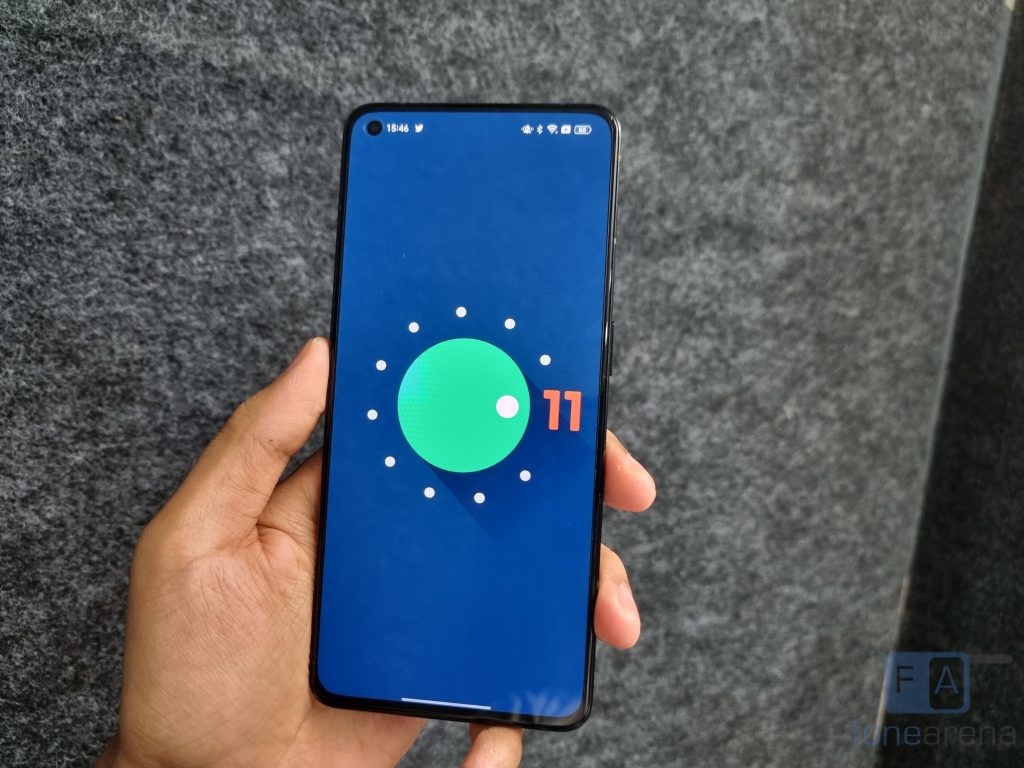
Out of the box, the Reno7 Pro comes with ColorOS 12, however it is based on Android 11 and not Android 12. OPPO says that the phone will receive an upgrade to Android 12 soon though.
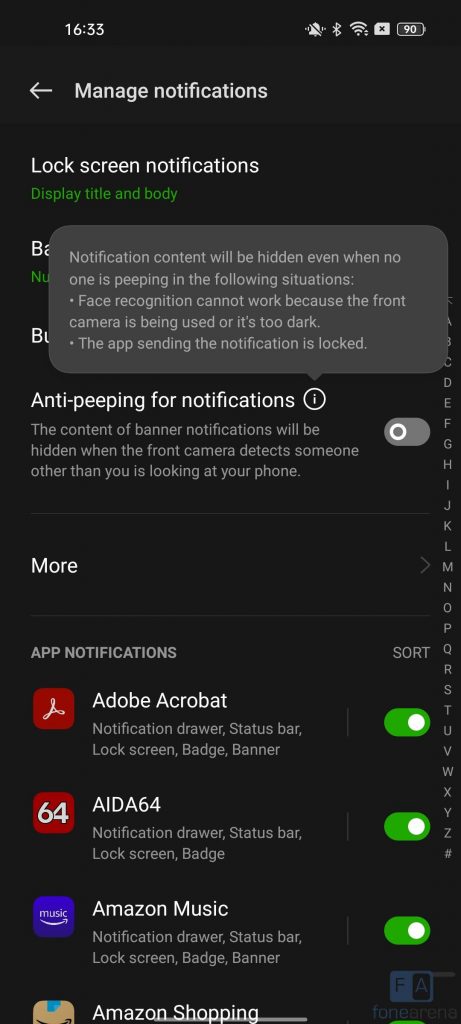
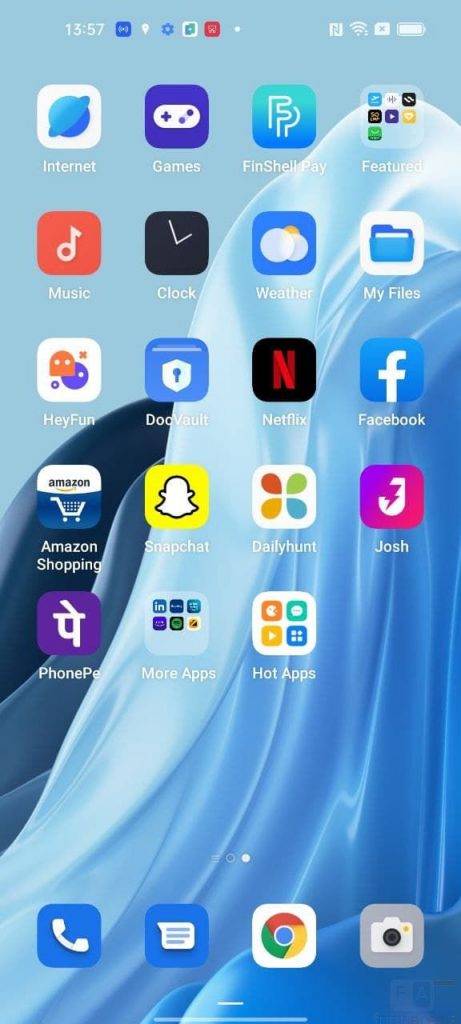
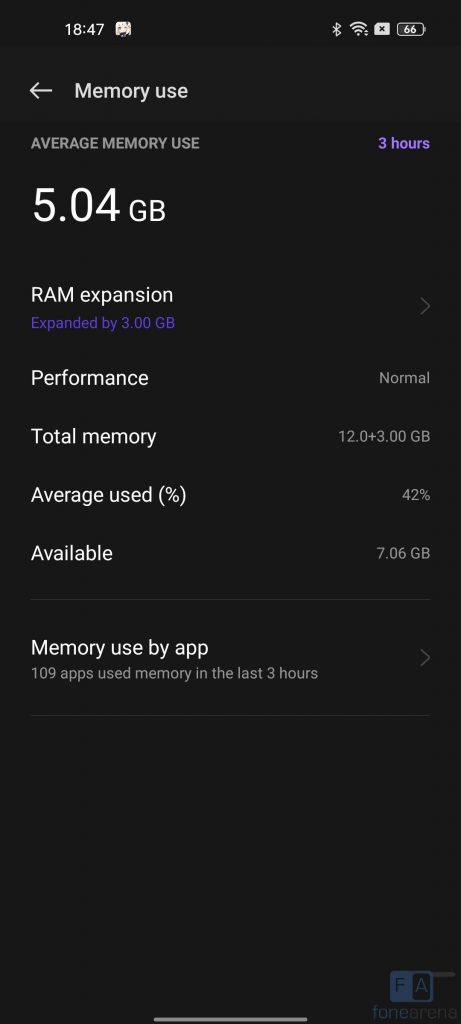
ColorOS 12 feels like a refined version of ColorOS 11, with a couple of new features such as Omoji, new icons, PC Connect, Smart Sidebar, and a couple of new accessibility options. The animations have been tweaked in many places and there are some nice privacy features too. For example, there is a feature called “Anti-peeping”, where the phone will hide banner notifications if it detects someone else is looking at your phone. The phone also supports their RAM expansion technology, which uses a portion of the ROM as RAM. When turned on, users can choose to expand the RAM by either 3GB, 5GB or 7GB, and during my review, I never faced slow-downs from the RAM getting filled up.
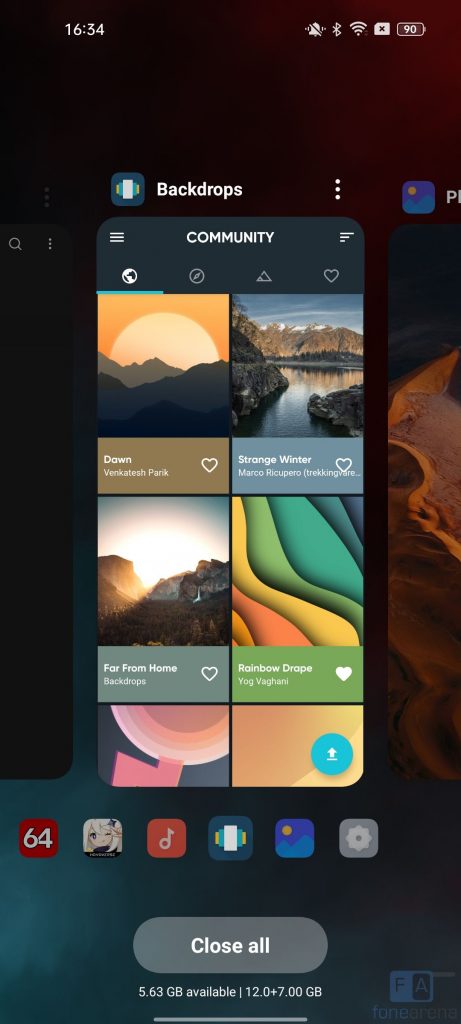
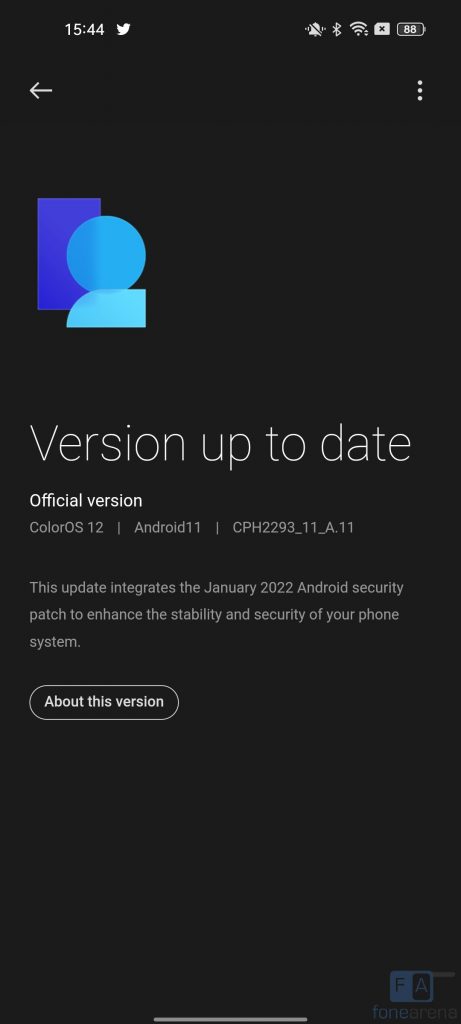
There are no ads shown in ColorOS 12, however there were a lot of pre-installed apps once the phone was set up, including DailyHunt, Snapchat, Josh, SoLoop, etc. Most of these, except OPPO’s first party apps, can be uninstalled. Besides this, there were a few occasional bugs but mostly, there aren’t any major pain points in ColorOS.
Fingerprint Sensor and Biometrics
For biometrics, the Reno7 Pro has an under-display fingerprint sensor, and it supports face unlock too. The positioning of the fingerprint sensor is fine now and was easy to reach. The unlocking speed, while not the fastest I’ve experienced, is good enough.
The phone also supports face unlock via its front-facing camera, however since it only uses an RGB sensor, I didn’t feel very secure when using it.
Music Player and Multimedia
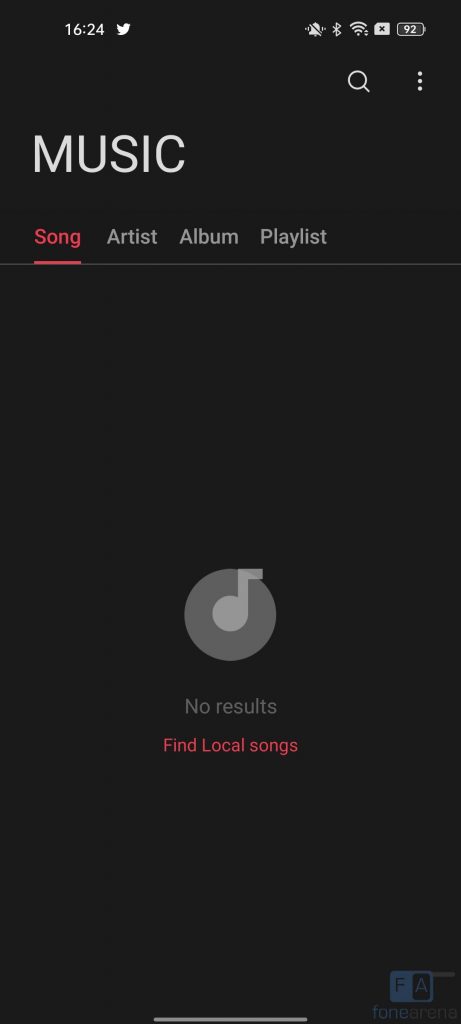
There is a default Music app pre-installed with ColorOS 12, with the typical set of features, however it does not come with an FM Radio app. The speakers on the Reno7 Pro have been upgraded to dual speakers, which is far better than a mono-speaker. However, the strength of the earpiece speaker is not very high. It feels like a 70-30 split in loudness between the bottom and earpiece speaker.
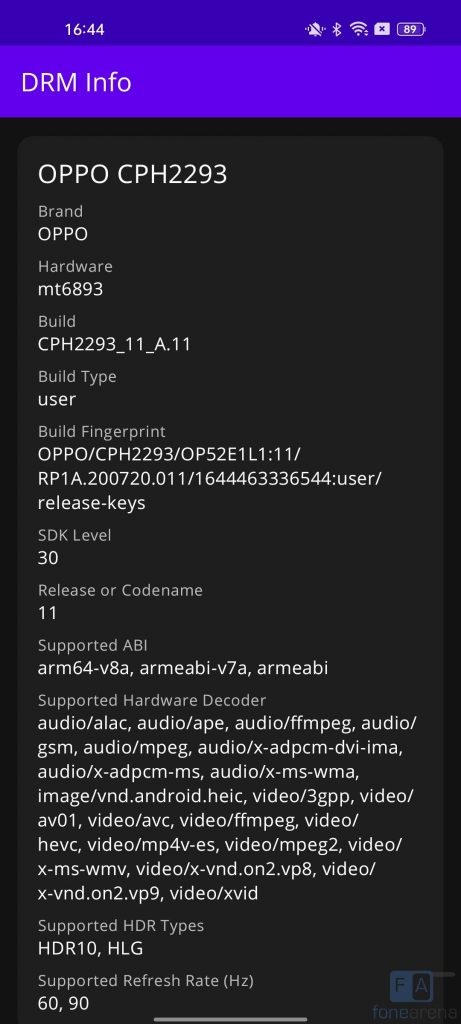
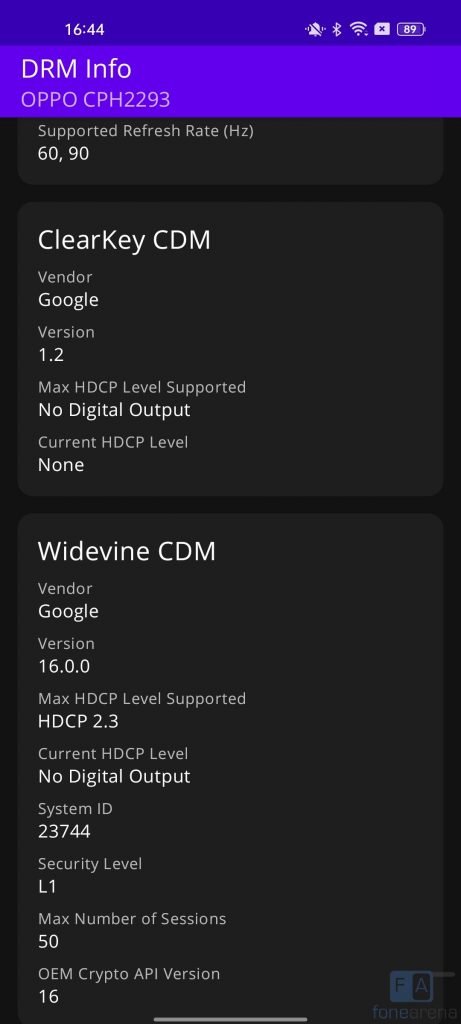
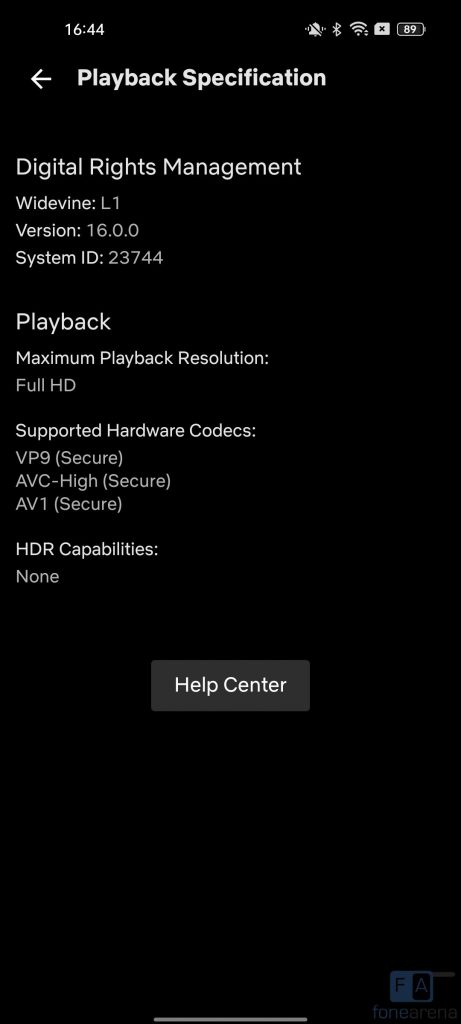
It does feature Widewine L1 support, Netflix HD certification and Amazon Prime Video HD certification, which enables HD playback in popular streaming apps. However, it only features HDR certification for Amazon Prime Video and not for Netflix.
Dual SIM and connectivity
The phone does come with dual nano SIM card slots, of which the first slot has 5G SA/NSA capabilities, while the second slot supports up to 4G LTE. It also supports VoLTE, and during my review, I faced no issues with calls. It does support carrier aggregation too, which is indicated by the little ‘+’ symbol when next to the 4G mark.
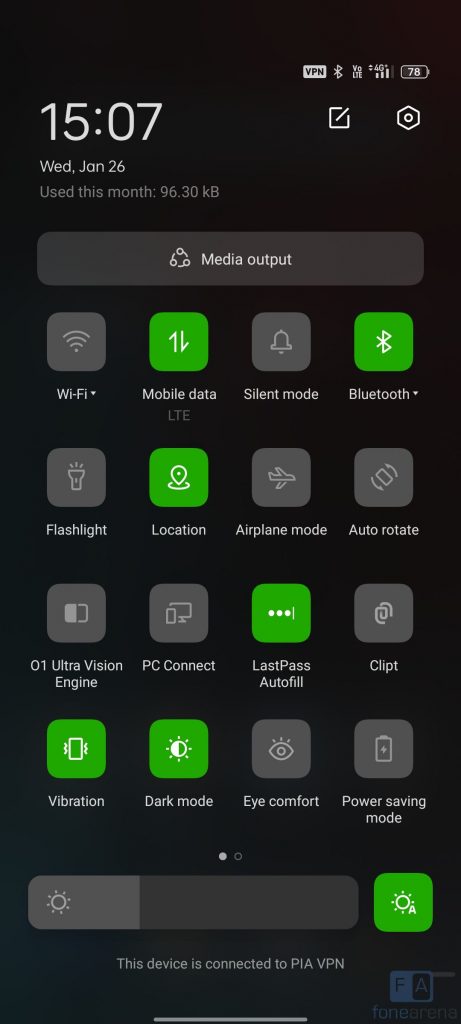
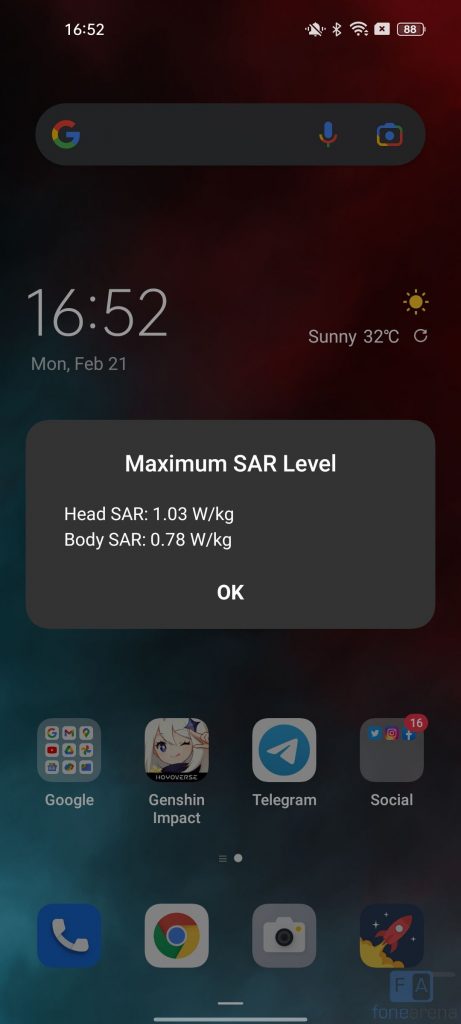
It has support for Wi-Fi 6 with 2 × 2 MIMO and MU-MIMO capabilities, along with Bluetooth 5.2. The SAR value for the Reno7 Pro was reported as – Head SAR: 1.03W/Kg, Body SAR: 0.78W/Kg. These values are good enough and well below the limit specified in India.
Performance and Benchmarks
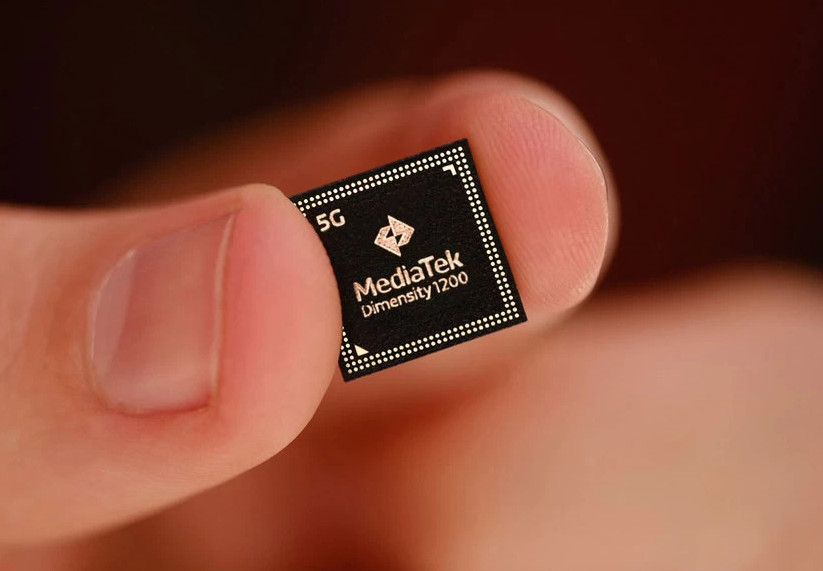
The Reno7 Pro is powered by a modified version of MediaTek’s flagship processor, called the Dimensity-1200 Max. OPPO has worked with MediaTek and improved upon the chip’s performance in areas of the display, imaging and video clarity. The chips have two features in particular that are new, called AI Deblur technology which reduces blurs in photos, and AI-PQ which enhances HDR content. Otherwise the chip is similar to the regular Dimensity-1200 SoC. It is an octa-core chip that can clock up to a maximum of 3.0GHz on its fastest Cortex A78 core. For the GPU, it comes with a Mali-G77 MC9 and complimenting the SoC are the 12GB of LPDDR4X RAM and 256GB of storage.
During my review, the Reno7 Pro was a great phone to use, with no animation drops or stutters. ColorOS continues to be well optimized for the Dimensity 1200, performing smoothly throughout my usage. The phone is also quite capable when gaming, performing reasonably well during graphics intensive titles such as COD, Dead Trigger and Asphalt 9. When playing Genshin Impact, however, I noticed a couple of slowdowns when playing for more than 20 mins.
Check out some benchmarks below:
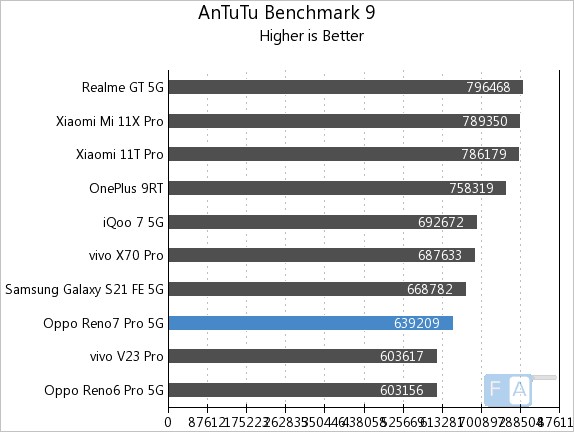
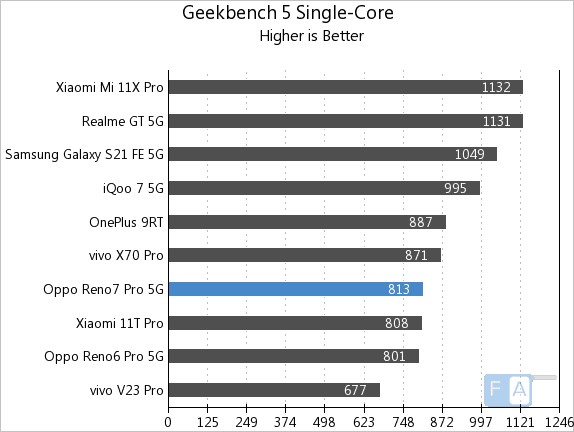

Battery life
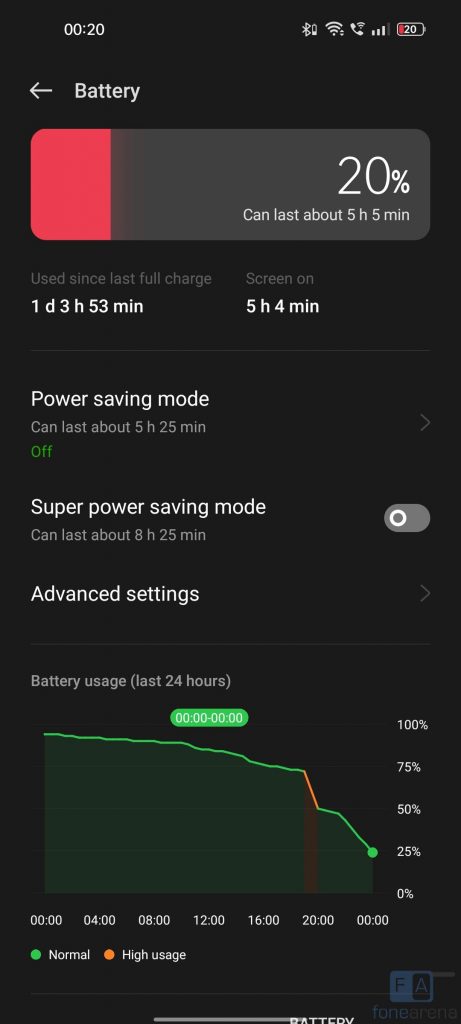
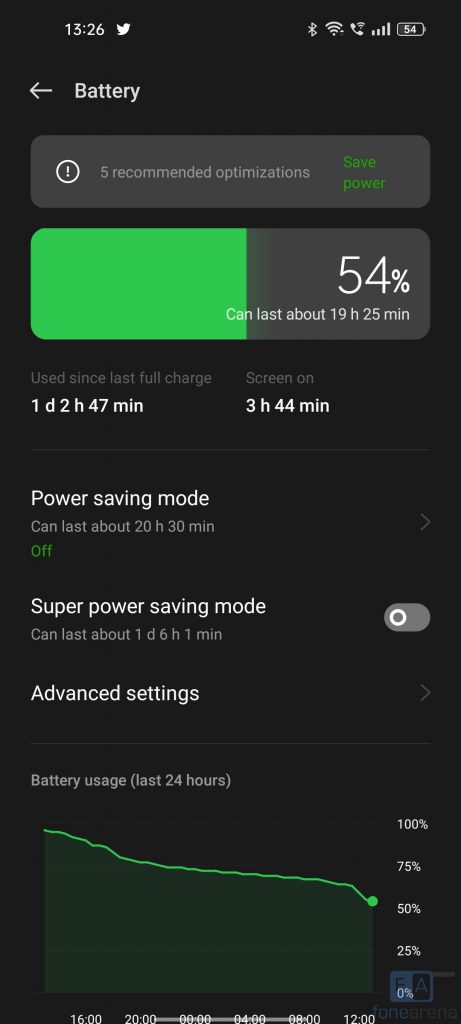
The Reno7 Pro has a 4500mAh battery that is split into 2 x 2250mAh series connected cells, which enables its fast 65W SuperVOOC charging technology. As I mentioned earlier, ColorOS 12 appears to be well optimized, and I was getting great battery life during my review. With medium-to heavy usage, I could sometimes get around 6 hours of screen-on-time, and it could comfortably last a day. With lighter usage, it was possible to get two full days of use, too.
The 65W charger is included in the box, and it can charge the phone from 0-100% in about 40 mins, which is really convenient. This is an amazing feature when you need to top up your smartphone quickly and get multiple hours of usage from a short period of charging.
Conclusion
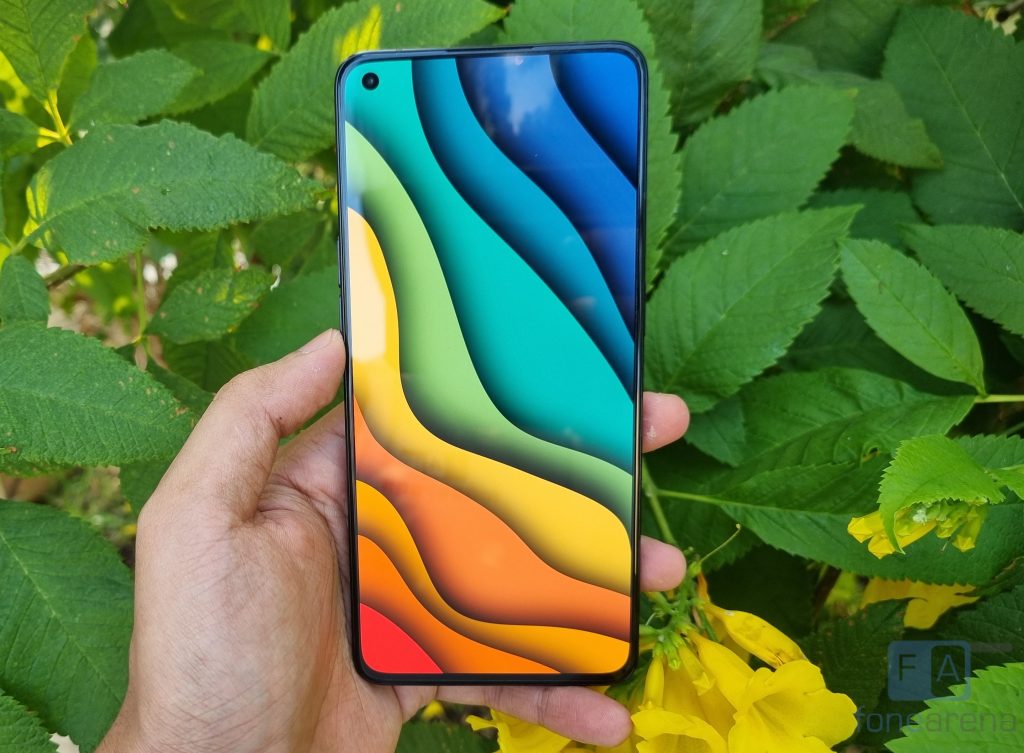
The OPPO Reno7 Pro is a minor upgrade from last year’s OPPO Reno6 Pro, which I had reviewed positively. The Reno7 Pro has a better design, premium build, great display, long battery life and good cameras. Other small upgrades include the dual speakers, an improved selfie camera, and I love the integration of the notification light into the camera bump. I sincerely hope OPPO adds that feature into more smartphones. Similar to last year, the phone’s weakness continues to be its sub-par performance when shooting videos and poor output from the macro sensor.
At Rs. 39990, the Reno7 Pro is priced closely to smartphones from OnePlus and Xiaomi, some of which contain the more powerful Snapdragon 888 processor . It has many positives and a few negatives, but so does the OnePlus 9RT and Xiaomi Mi 11T Pro, which is a little more expensive but has a better processor and display.
If you like having the many customization features of ColorOS and if the camera experience is super important to you, such as the Bokeh Flare Portrait video feature, then I can recommend the OPPO Reno7 Pro.
The phone is available from Flipkart, OPPO India online store and offline stores for Rs. 39,990.
Pros
- Beautiful design
- Very good display with a 90Hz refresh rate
- Excellent battery life and fast charging
- Impressive camera with AI capabilities like Bokeh Flare Portrait video
Cons
- Sub-par video performance overall and poor macro camera
- Occasional bugs in ColorOS
- No Android 12 out-of-the-box

